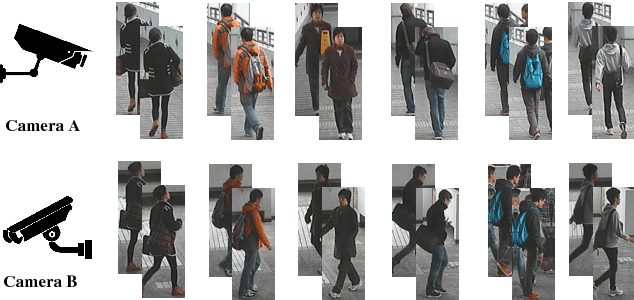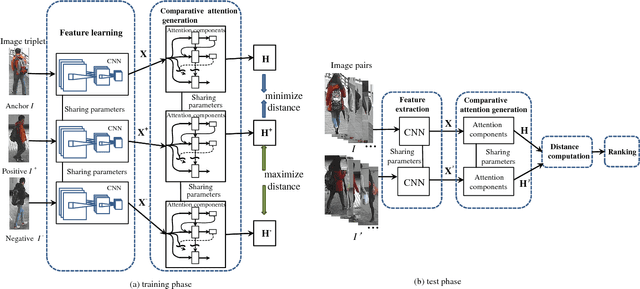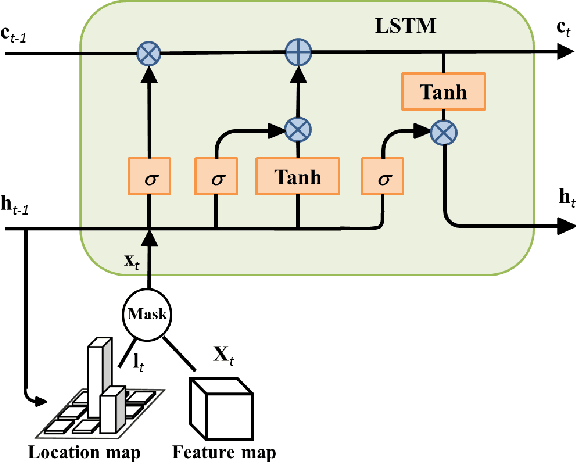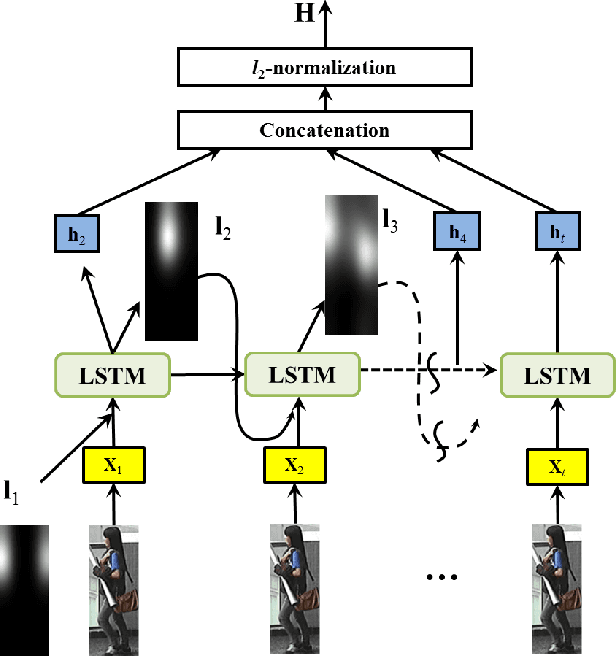End-to-End Comparative Attention Networks for Person Re-identification
Paper and Code
Apr 28, 2017



Person re-identification across disjoint camera views has been widely applied in video surveillance yet it is still a challenging problem. One of the major challenges lies in the lack of spatial and temporal cues, which makes it difficult to deal with large variations of lighting conditions, viewing angles, body poses and occlusions. Recently, several deep learning based person re-identification approaches have been proposed and achieved remarkable performance. However, most of those approaches extract discriminative features from the whole frame at one glimpse without differentiating various parts of the persons to identify. It is essentially important to examine multiple highly discriminative local regions of the person images in details through multiple glimpses for dealing with the large appearance variance. In this paper, we propose a new soft attention based model, i.e., the end to-end Comparative Attention Network (CAN), specifically tailored for the task of person re-identification. The end-to-end CAN learns to selectively focus on parts of pairs of person images after taking a few glimpses of them and adaptively comparing their appearance. The CAN model is able to learn which parts of images are relevant for discerning persons and automatically integrates information from different parts to determine whether a pair of images belongs to the same person. In other words, our proposed CAN model simulates the human perception process to verify whether two images are from the same person. Extensive experiments on three benchmark person re-identification datasets, including CUHK01, CHUHK03 and Market-1501, clearly demonstrate that our proposed end-to-end CAN for person re-identification outperforms well established baselines significantly and offer new state-of-the-art performance.
 Add to Chrome
Add to Chrome Add to Firefox
Add to Firefox Add to Edge
Add to Edge